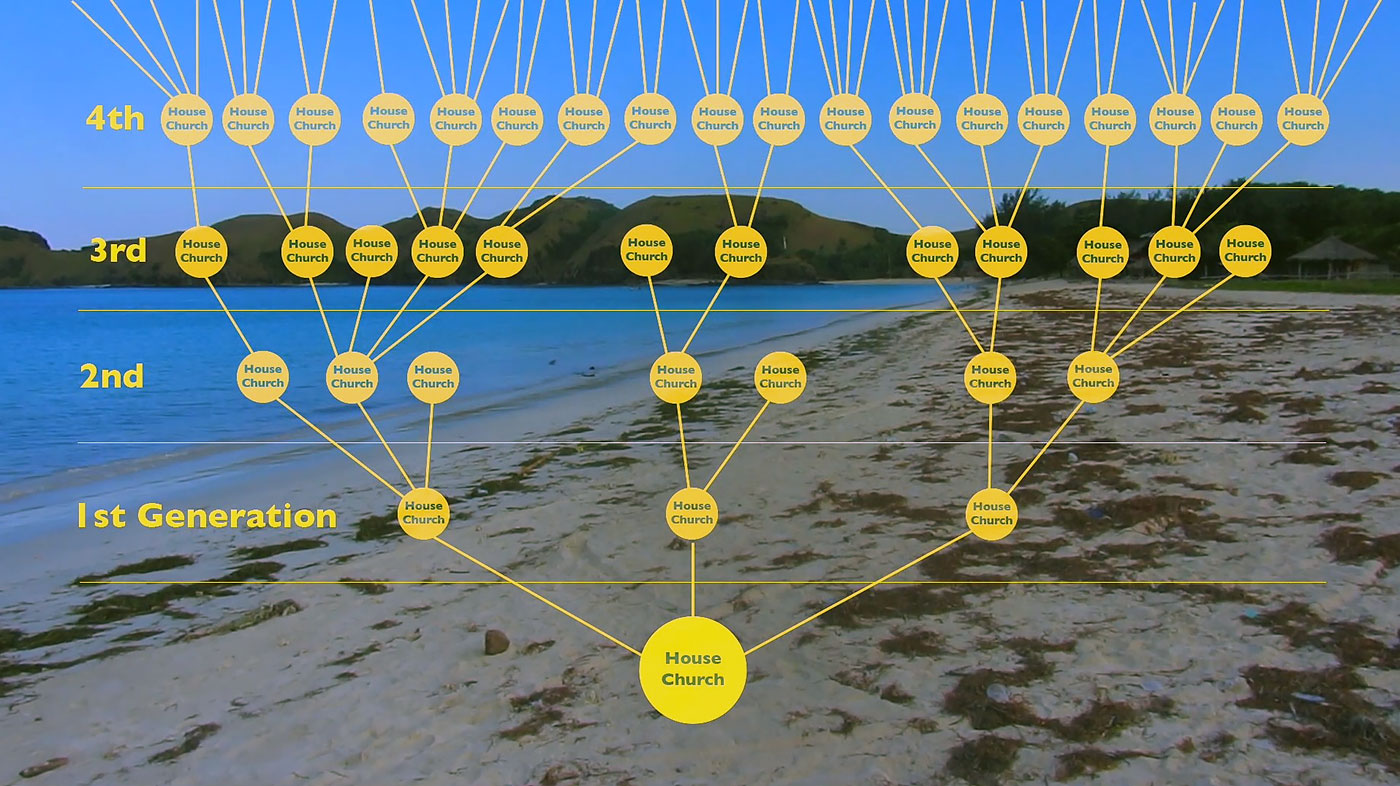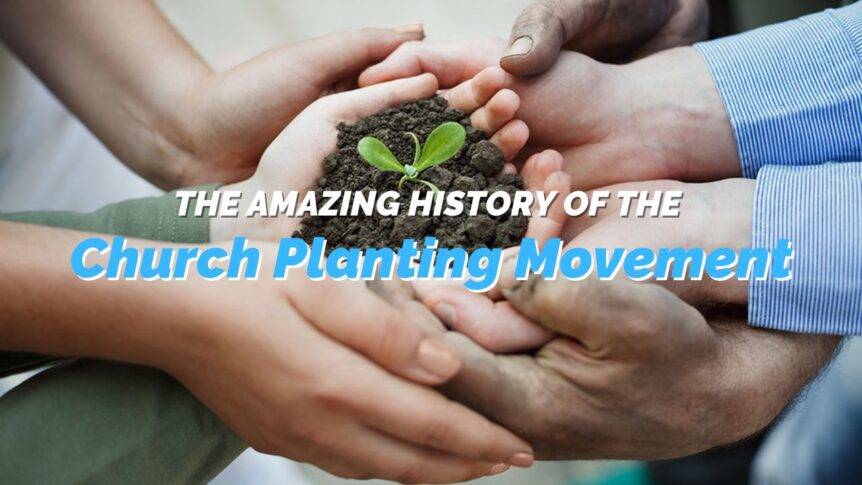There’s a long history of church planting movements in the world. If you haven’t heard of the term “church planting movement”, don’t worry! We’ll discover together the rich and amazing history.
A church planting movement can be simply defined as a rapid increase in the number of indigenous believers and churches that assume responsibility for planting more churches among the unreached. CPMs are Holy Spirit inspired movements characterized by radical prayer, abundant gospel sowing, obedience-based discipleship, intentional church planting, and heavy life-on-life leadership development.
Let’s dive even deeper into where CPM’s began and their significance today!
Table of contents
Estimated reading time: 10 minutes
What is a Church Planting Movement?

A CPM is a Spirit-directed activity that naturally builds, renews, and expands the body of Christ in a given city or region through the recovery and application of the gospel. The movement produces hundreds of new believers, scores of leaders, and numerous churches planted that bring spiritual, social, and cultural change to the city and surrounding region.
What Church planters need to think about:
- Effective church planting needs Christians who grasp the gospel and are saturated by a Reformation world view. They also should be living in a city and city-building in the city in sufficient numbers and can make effective change to a major city.
- Church planting also needs churches that are evangelistically focused and discipleship oriented, and which can train and send hundreds of Christians into the marketplace. To make a difference in a city, we probably need to see one church for every 1,000 people.
- Renewing and reviving churches spread the dynamics of spiritual renewal into churches of the region. These dynamics include individual renewal, corporate renewal dynamics, and corporate renewal signs. Without renewal by God’s grace, churches stagnate and die out.
- Intentional cooperation with other churches and Christians from many major cultural institutions can impact the city or region with the gospel. Work with the indigenous churches and people.
- A church multiplying and impacting movement takes time–at least 20-50 years. Revival becomes widespread in the first generation bringing hundreds into the Kingdom of God; in the second generation Christians rise and make their influence known. The third generation begins to see the full harvest of a multiplication movement.
History of the Church Planting Movement
The modern Church Planting Movement can trace its beginnings to the mid-nineteenth century when Henry Venn and Rufus Anderson developed the three-self formula of an indigenous missions policy: “they believed that young churches should be self-propagating, self-supporting, and self-governing from their inception.”
Donald McGavran, a missionary in India who “coined the concept of ‘people movements’ to Christ,” is cited as an early proponent of the kind of missionary work that underlies the Church Planting Movement, by focusing his missionary work on converting groups of people (“groups, tribes, villages, ethnic groups”) rather than individuals.
In 1992, of the 1,606 churches started by International Mission Board personnel and their partners, 20 were launched by NRM/SC teams in World A. And then in 1993, they then claimed 75 churches. In 1994, 169 new churches. And in 1995, 367 new churches were started in World A, just by the NRM/SC teams.
These results were overturning a long-standing assumption that unreached people would be resistant to the gospel message of Jesus Christ. But these results were “demonstrating that World A people, upon having the opportunity to hear the gospel, indeed were responsive”. In fact, in many cases, they were more responsive than many of the Board’s traditional mission fields. As David Barrett stated in 1994, “We can definitely say that World A is a more responsive harvest field than World B or World C. Some World A peoples have current response rates over 500 [conversions per million evangelism hours expended]”.
In 1998, David Garrison reported to the board of trustees they had documented four “Church Planting Movements” among the unreached people groups their Strategy Coordinators were targeting. And by 2001, they were tracking 35 such movements. In 2003, Garrison reported they had “assessed and confirmed seven church-planting movements” and were tracking 42 more. As of March 2022, there are 1,855 movements in stage 5 and 5,160 active movement engagements.
What the Bible says about Church Planting

Of course, we can see the true beginning of the church planting movement all the way back in the Bible. The first place that the church spread from Judea was Samaria. Christianity spread to other areas because persecution forced the Christians to leave Jerusalem. Christianity spread to the Gentiles largely because of the Apostle Paul, who had formerly been a Pharisee and a persecutor of the church.
In a world where many want to shape God to fit their needs, it’s important to ensure any new church plant is rooted in Scripture. Also, rapidly growing church planting movements may tend to become heretical, so we, as leaders, need to guard against that by learning and standing firm in the Word of God. Many of the New Testament letters were written to help those local churches get back on track as false teaching threatened to undermine the gospel (Galatians, Colossians, 1 John, for example).
In Acts 1, Jesus told his followers: “Don’t leave Jerusalem, but wait for the gift my Father promised, which you have heard me speak about. For John baptized with water but in a few days you will be baptized with the Holy Spirit” (Acts 1:4-5).
Recruiting, training and strengthening godly leaders is essential to keep the momentum going in a church planting movement. The heads of church planting movements are leaders of leaders. These leaders are teachable and love to learn. They flourish in networks of like-minded leaders. They want to pour their lives into others and they are looking for “tracks to run on” for leadership development in their movements. Pray for the Lord of the Harvest to bring Kingdom workers for your church planting movement. Then recruit them (Matthew 9:35-38).
As church planting movement leaders communicate about the Kingdom, the Lord meets their needs. Also, God will give them opportunities to serve people like he gave Peter and John the opportunity to heal the man crippled from birth. Then, they will get the opportunity to share the Good News (Acts 3:1-8).
The Early Church movements
The early church exploded rapidly under the leadership of the original Apostles as they preached, trained and mobilized others for spreading the Gospel message. The Holy Spirit worked through them to enable them to follow Jesus last command, “But you will receive power when the Holy Spirit comes on you; and you will be my witnesses in Jerusalem, and in all Judea and Samaria, and to the ends of the earth.” They launched the first CPM. At DCPI, we believe this same style of leadership is what enables men and women to effectively catalyze church planting movements. You can read more about the apostolic leadership style in our blog about it here.
Church planting movements encourage people to repent and be baptized for the forgiveness of their sins. They receive the Holy Spirit. Peter affirmed that this promise was for all of us around the world in every generation (Acts 2:38).
God often guides leaders of CPM’S to develop strong friendships with leaders from other countries and cultures. For example, God directed Philip to the Ethiopian eunuch in Acts 8:26. Philip was used by God to communicate the Good News of Jesus to the eunuch. Church planting movement leaders must follow God’s guidance to connect with significant leaders from other countries. So, they can help them take their next steps for the Lord and his Kingdom.
Essentials of the Church Planting Movement
There are a few essentials of the church planting movement. It reproduces rapidly, multiplying churches, and the churches are indigenous.
Church planting leaders must go beyond their people group to other groups to share the Gospel. Taking a trip for God results in powerful ministry. Peter traveled to be with Cornelius and his people group. Paul traveled to people groups throughout the Mediterranean world. CPM leaders should have all kinds of spiritual adventures together (Acts 13:4-12 records the beginning of the first missionary journey).
What are some of the spiritual adventures that church planting movement leaders experience?
- meeting new friends who need healing for their brokenness
- praying for healing
- connecting with other church planting movement leaders with whom they can partner
- finding God’s provision of resources
- teaching and preaching the Word of God
- and seeing life change in people very different from themselves
- preaching in many different churches
Leaders in church planting movements must operate by faith. They trust Jesus and get out of the “boat.” They take courage, leave the safe place and take a risk. Often, they cry out, “Save me” and Jesus does. They learn to depend upon Jesus and operate by faith.
Leaders in a church plant or church planting movements ask God to supply the needs of the movement and its leaders. As they pray, they seek the resources that are needed. When they find a potential opportunity to receive those resources, they knock on that door. They expect by faith that God will open it and they are convinced that our Heavenly Father gives good gifts. They believe that he provides enough for his children.
4 Fields Methodology
The CPM cycle can be hard to conceptualize. That’s why CPM participants have found it useful to develop a simple framework for people to visualize the components of a church planting movement. The most well-known of these frameworks is called “4 Fields”. 4 Fields is a framework for visualizing the CPM cycle.
1. Motivation.
They are dedicated, sacrificial, and God-fearing. They long for those who are lost and without hope to know the love, mercy and forgiveness of Jesus, and to a person.
2. Indigeneity.
They challenge traditional forms of church that are extra-biblical. Their reaction against extra-biblical and/or sinful practices of the Western church can be a helpful corrective.
3. Scripture.
Over the years, the way I have personally seen the most people come to Jesus from unreached people groups is through inductive Bible studies, usually whole-book studies in the Gospels.
4. Discipleship.
It’s no wonder that, when struggling missionaries are given some training on CPM, they latch on to this method. Sometimes, it’s the first tool they have been given for discipleship.

The Four Fields of Kingdom Growth was inspired by Jesus’ parable of the growing seed in Mark 4:26-29. Each field directly corresponds to a primary component of the CPM Cycle:
- Field 1 – Empty Field (Entry Plan)
- Field 2 – Seeded Field (Gospel Plan)
- Field 3 – Growing Field (Discipleship Plan)
- Field 4 – Harvest Field (Church Formation Plan)
The 4 Fields framework actually has 5 parts. The 5th part in the middle is a leadership development wheel that takes place in each of the 4 fields.
- Part 5 – Leadership Development Plan
Seven Stages of Development
People who have studied CPMs around the world have found that they follow seven stages of development.
- Moving Purposefully – a team is consistently trying to consistently establish new 1st generation believers and churches
- Focused – some 2nd generation churches are forming that were started by 1st generation believers
- Breakthrough – consistent 2nd generation churches, some 3rd generation
- Emerging CPM – consistent 3rd generation churches, some 4th generation
- CPM – multiple streams of 4th+ generation churches
- Sustained CPM – visionary, indigenous leaders leading the movement with little or no outside help
- Multiplying CPMs – the movement is catalyzing new CPMs in other unreached peoples and places
Even though movements are taking place on different continents among a variety of cultures, these movements hold many things in common. David Garrison studied numerous movements around the world and found that every movement had the following in common:
- Extraordinary prayer
- Abundant gospel sowing
- Intentional church planting
- Scriptural Authority
- Local leadership
- Lay leadership
- Cell or house churches
- Churches planting churches
- Rapid reproduction
- Healthy churches
If you’d like to learn more about the Church Planting Movement, check out Church Planting Movements: How God Is Redeeming A Lost Worldby David Garrison!
Related Links:




